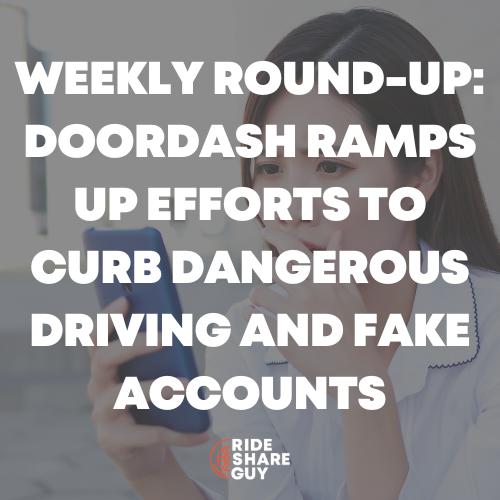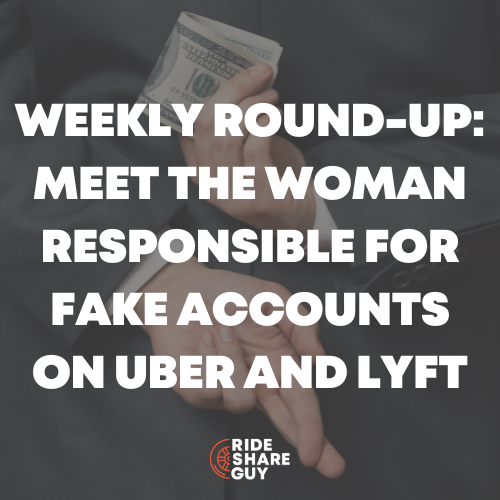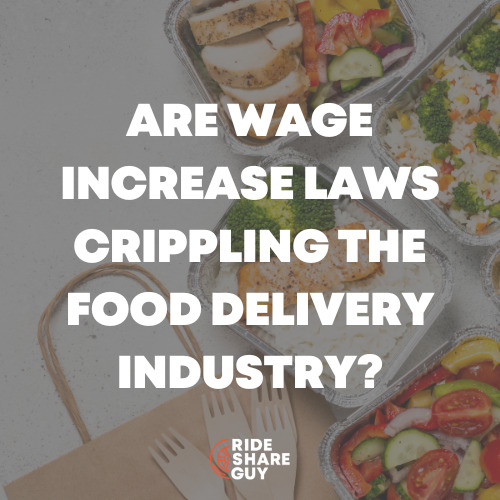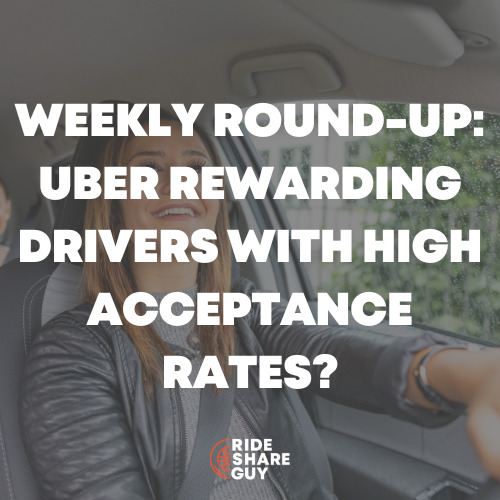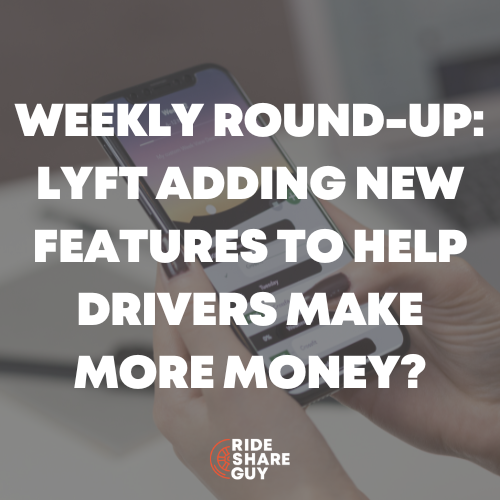While gas prices continue to rise, Uber and DoorDash have announced an end date for their gas assistance programs they’ve had in place since April. In the same week, Walmart announced it will be expanding their drone delivery services. Senior RSG contributor Paula Gibbins dives into how these pieces of news might affect delivery and rideshare drivers alike in the coming months in this week’s roundup.
Uber and DoorDash are killing gas-assistance programs for delivery drivers despite soaring costs at the pump (Business Insider)
Summary: Uber is ending a program that added a fuel surcharge for customers to help delivery drivers offset the rising cost of gas.
The company plans to discontinue its $0.45 surcharge on June 15, according to a note sent to
Uber Eats drivers and shared with Insider. It plans to continue charging ride-hailing customers an extra $0.55 per ride.
“We are extending the gas surcharge until June 15th for Eats couriers, but do not plan to continue it past that date,” an Uber spokesperson told Insider. “This change will not affect drivers on Uber rides who will continue to get the gas surcharge as we evaluate alternative options. Uber’s platform makes it easier for drivers who have been delivering food to make the switch and start picking up and dropping off riders.”
Uber is the second company to kill off a fuel-subsidy program. At the end of April, DoorDash told drivers it would no longer pay weekly gas bonuses for delivery workers who drove more than 100 miles in a week….
My Take: Of course good news was coupled immediately with bad news. “We are extending the gas surcharge…but do not plan to continue it past that date.” It is, I suppose, possible they will extend it if the current gas situation doesn’t right itself.
However, they seem pretty confident that drivers either won’t need their help past June 15, or else they just don’t care if the situation gets worse or remains the same.
This is the notification drivers received in their Uber Eats accounts this week. Some of our readers on Facebook pointed out that the surcharge doesn’t cost anything for Uber. It’s a charge that is taken directly from the customers and given directly to the drivers. So, what’s the harm in continuing it as long as customers are still willing to pay it?
One reader seems to think that these surcharges shouldn’t go to delivery drivers, but only rideshare drivers, or those who “leave the three square mile zone they are working”.
To this I just say that not all markets are the same. Some delivery drivers work in more remote areas where they do drive much further than 3 miles. I do think the surcharge has been helpful to many, though likely not helpful enough to all. As gas prices are still continuing to skyrocket, a mere $0.45-0.55 per trip is not going to make a big enough difference to many. But, something is better than nothing. And now everyone needs to gear up for nothing after June 15 passes.
Walmart is expanding its drone deliveries to reach 4 million households (MSN)
Summary: Walmart announced on Tuesday that it’s planning on expanding the number of stores that offer drone-delivered packages; by the end of the year, it hopes to fly deliveries from 34 sites across Arizona, Arkansas, Florida, Texas, Utah, and Virginia. The company says the expansion will give up to 4 million households access to the service, which is a significant increase. When the company launched the program in November 2021, it was only available in a single town in Arkansas.
Walmart says that customers who live near drone-capable stores will be able to order items weighing less than 10 pounds in total between 8AM and 8PM. The deliveries, which cost $3.99, are done via a drone operated by a company called DroneUp, which has a partnership with Walmart. (The retailer has also invested in the delivery company.) Workers at the Walmart location receive the order, pack it into a box, and then secure the box to a drone. Then, a pilot flies the drone to the customer, and it’s dropped onto their front lawn using what looks like a giant claw.
It sounds like Walmart’s not just trying to expand the program’s footprint — the company also wants to increase the number of packages it’s delivering via drone. In its press release, the company says it’s completed “hundreds of deliveries within a matter of months.” With the expansion, it says it’ll have the ability to do more than a million drone deliveries a year….
My Take: Will drone deliveries start to replace driver deliveries? Not likely, or at least not for their bigger orders. Delivery drivers will be necessary for a long time yet with how large some of the Walmart orders can get. Drivers who have had to haul 20 cases of water for one order know this to be true.
Perhaps small orders where it’s one or two items will be transitioned over to drone deliveries, but those likely wouldn’t have been profitable for drivers anyway, so the change shouldn’t be overly noticeable for now.
Instacart updates its customer ratings system, rolls out new features for shoppers (TechCrunch)
Summary: Instacart announced today that it’s introducing a revamped customer ratings system that is designed to be more informative and fair for shoppers on its platform. The company will now remove a rating if it’s from a customer who consistently rates their shoppers below five stars. Instacart is also going to forgive more ratings for reasons that may be outside of a shopper’s control.
Shoppers will now also just need to maintain a 4.7 or above rating to get prioritization for “batches,” which is a term Instacart uses to describe delivery jobs that include more than one order at a specific store. Prior to this change, the prioritization of batches was based on having the highest rating possible. Instacart notes that a few low ratings shouldn’t have a significant impact on a shopper’s access to batches.
In addition to the revamped customer rating system, Instacart is rolling out new features for shoppers. The company is introducing a new “Your stats” screen that shows shoppers information about their account, including their average customer rating, customer feedback and statistics like how many orders they’ve completed. There’s also a new section within the Shopper app that will provide shoppers with information about batch accuracy, including details about items found, replacements and more. Instacart says a shopper’s accuracy information does not have an impact on their rating or access to batches, but can provide additional insights….
My Take: I haven’t personally been an Instacart shopper. I hadn’t realized that there was a star rating system like with Uber and Lyft. I was under the impression it was more or less a thumbs up or thumbs down rating system.
It also sounds helpful to get alerts when you’re in an area that may have a higher batch volume. I’d be curious to hear from some Instacart shoppers to see their reactions to these updates and how they are in real life once implemented.
Also in the news…
Lyft joins Uber in ‘significantly’ slowing hiring and cutting budgets, but promises no layoffs: WSJ (Business Insider)
Thoughts: Surprise, surprise, Lyft is following in Uber’s footsteps as usual. And, of course, it’s to the detriment of those who work for them. They promise no layoffs for now. But cutting budgets and slowing hiring isn’t necessarily going to help their respective companies.
Uber launching in key tourist destinations including Malta and Santorini (Coventry Telegraph)
Thoughts: It kind of surprises me that Uber wasn’t already active in these tourist destinations.
Uber and Lyft’s New Road: Fewer Drivers, Thrifty Riders and Jittery Investors (The Wall Street Journal)
Thoughts: Good quote from RSG contributor Sergio here about how drivers aren’t in rideshare for loyalty – just the money they can make. Do you agree or disagree?
Gridwise Raises New Funds in Sign VCs Still Have Faith in Gig-Worker Economy (Bloomberg)
Thoughts: Gridwise is one of our favorite apps for couriers, and it’s good to see new investment to keep Gridwise growing. Check out our Gridwise review and sign up for Gridwise here.
Are you an Instacart shopper? Share with us your experience with these new changes they are making. Have they been helpful or have you not really noticed a difference?
-Paula @ RSG
